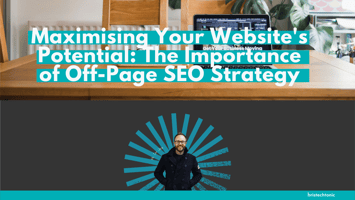Believe it or not, only 30% of businesses have an SEO strategy.
8 Tips for Creating Powerful SEO Content
Powerful SEO content has multiple uses for a range of people from professional bloggers building their portfolio and presence, to businesses focusing on finding clients, and everything in between. The ultimate goal is to bring more people to your website, which will have a (hopefully) positive knock on effect all the way down the line. SEO is a powerful tool if you know how to use it, and that is why the post below explores eight essential tips for managing and embracing this strategy.
What Is SEO Content?
SEO content is the articles and other multi-media style pieces that dominate blogs and websites all over the internet. The purpose?
- Move up higher in the search engine rankings.
- Bring more traffic to your website.
- Gain more exposure.
- Be more relevant and become established.
SEO is about more than just writing a piece of generic content and putting it on your site. It is a mapped out trajectory that moves in different directions to bring your post to the forefront of a relevant audience. When used correctly it can have an overwhelmingly positive impact on your output and purpose.
The Advantages
All of these outputs lead to a number of advantages. With a strong SEO content strategy in place and functioning, a whole new world of doors is opened to you. For example:
- You reach more people and gain a higher degree of visibility, sometimes on a global scale.
- You might be able to generate more sales leads and therefore grow your product agenda.
- It is a great addition and vital component to a wider content marketing strategy.
- SEO breeds credibility and establishes brand values for your target demographic.
Tip One: Get to Know the Basic SEO Principles
When it comes to learning seo, you need a high-quality and dependable source to get to grips with the basics. If you dive into the strategy without knowing essential terms and information, you won’t be able to properly impact the intended results. That is why tip number one is to get to know the basic SEO principles before you try to craft a strategy. When you understand the big terminology, you will be able to navigate it with ease. Take a look at the following examples for some inspiration.
- SERP: What is SERP? Well, it stands for Search Engine Results Page and you will be focusing on it a lot during your SEO journey. This is where you want to be.
- Keywords: Keywords are the things that make up buzz phrases that people use most commonly when they look for answers on the internet.
- Meta Tag: Meta Tags are there to provide a screenshot of the wider content context to draw people in from the main search engine results page.
Tip Two: Remember Quality Content Counts: Research is Key
Quality content is everything in SEO. Half of the point of a good SEO strategy is to become an authoritative voice in your subject area or areas. To do this, you have to sound legitimate and have your facts backed up by evidence. Clickbait is fine for generic content on certain websites, but real impactful SEO happens when the content has a great quality to it as well as engagement and style. If your posts are proven to be defunct and untruthful, you run the risk of no one coming back for more. If you build your authority and credibility with well thought through placement and even a few core internal links in some cases, the post will be immediately boosted.
Tip Three: Keywords and Keyphrases Are Essential
A large part of SEO is incorporating key search terms into your writing. These are known as keywords or key phrases depending on what you use and where you put them. These are the things that people type into Google (or whichever search engine they use) and they are the words you want to target. If you show that you are relevant and have the information people want, your post has a better chance of being seen and clicked on.
Don’t Overuse Your Keywords
Keywords are great but only when they are used in the right capacity. When you use too many, you run the risk of being penalised by search engines like Google and making your post seem overdone and irrelevant. Unnatural writing switches users off immediately, so they have to be integrated as organically as possible.
Do Include at Least One Keyphrase in Your Intro
Keyphrases exist to bring readers to your post, right? Therefore, to fulfill this purpose, putting one in your introduction will immediately capture attention and make people want to keep reading. This is a great way to show people what you’re actually talking about and what the post is going to deliver.
Tip Five: Formatting Advice
The way you format your post will have a positive effect on the way the SEO points interact with your audience. Formatting can mean many things from where you place the images to which font you use and how many headers you have throughout the piece. Headers and snappy titles are important, but there is more to it than just these facts.
Use Headers
Headers are important. They create the sections of the post, which are undeniably needed to maximise the way an article flows and weaves. Use headers two, three, four, five, and six to create clear segments throughout your writing, and facilitate an easy read for the browser.
Include Bullet Points
Bullet points are a great way to maintain efficiency and structure throughout a post while highlighting key points to the readers. Bullet points are eye-catching and will naturally capture attention, which keeps your post relevant and shows users that you have the information they need around the initial inquiry.
Keep It Snappy
Short and sweet is the theme of the day. SEO works well when it is supported by shorter phrases with keyword targets and snappy paragraphs. Where a piece has three line sentences and 10 sentence paragraphs, it will lose interest immediately and rank lower. When a post has short utterances, buzz phrases, and clear definitions between the segments, this will do better.
Make the Titles Count
Titles have to mean something. There is more impact in a catchy phrase for a subheading than there is in anything else. Headers are there for keywords and to organise your page. Search engines use your headers to categorise your site and all the posts inside of it. They count for a lot, and a number of relevant headers to the blog post are 100% more impactful than a number of random paragraph breaks with no map to guide them.
Tip Six: Consider the Relevance of Meta Descriptions
Meta descriptions are a snapshot of your site that people will see on a search engine. You are in control of what you write, and the whole purpose is to draw people in and catch the eye of the reader. Stick a keyphrase in the meta description and keep it above 120 characters and below 156. This is a summary, not a detailed description!
Tip Seven: Thinking About Images
It is fairly typical to use images in blog posts. They add a point of visual interest and create a vision of a well-put-together piece overall. Keep it simple, sure, but don’t be afraid to use images to your advantage as well. The biggest pointer about images is to think about how you will optimise them on your page because the last thing you want from an SEO perspective is a picture that takes up a lot of space. Why is this? SLOW websites are terrible for negatively affecting SEO. Big images might slow your page down which would detract from the overarching point and purpose. This is the last thing you want!
The additional tip for images is to always include the alt text for further optimisation. The alt text has an important role in that it is essentially a small description of your chosen image but what you describe can powerfully impact the efficacy of the post and page. It’s a space to use keywords and it increases site accessibility too.
Tip Eight: Use Internal Links
Internal links serve a dual purpose. Firstly, they exist so that the search engine, for example, Google, can understand your page and post in more detail. This means in terms of organisational structure and actual content as well. Furthermore, internal linking moves to create a relationship with the reader to show authority and expands beyond this into reliability. It is a road worth exploring and an integral part of any super-effective SEO strategy.
Powerful SEO content is reliant upon multiple factors. To create the biggest impact you have to engage with a multi-faceted strategy. There is room to be unique and there is space to stay creative, as long as you follow the basic principles to maximise the impact. Your site will benefit from SEO, as it has fast become a reliable, established method to boost exposure and credibility. So, climb up the rankings and keep your content in the spotlight by remembering keywords, images, and good formatting across the board.




